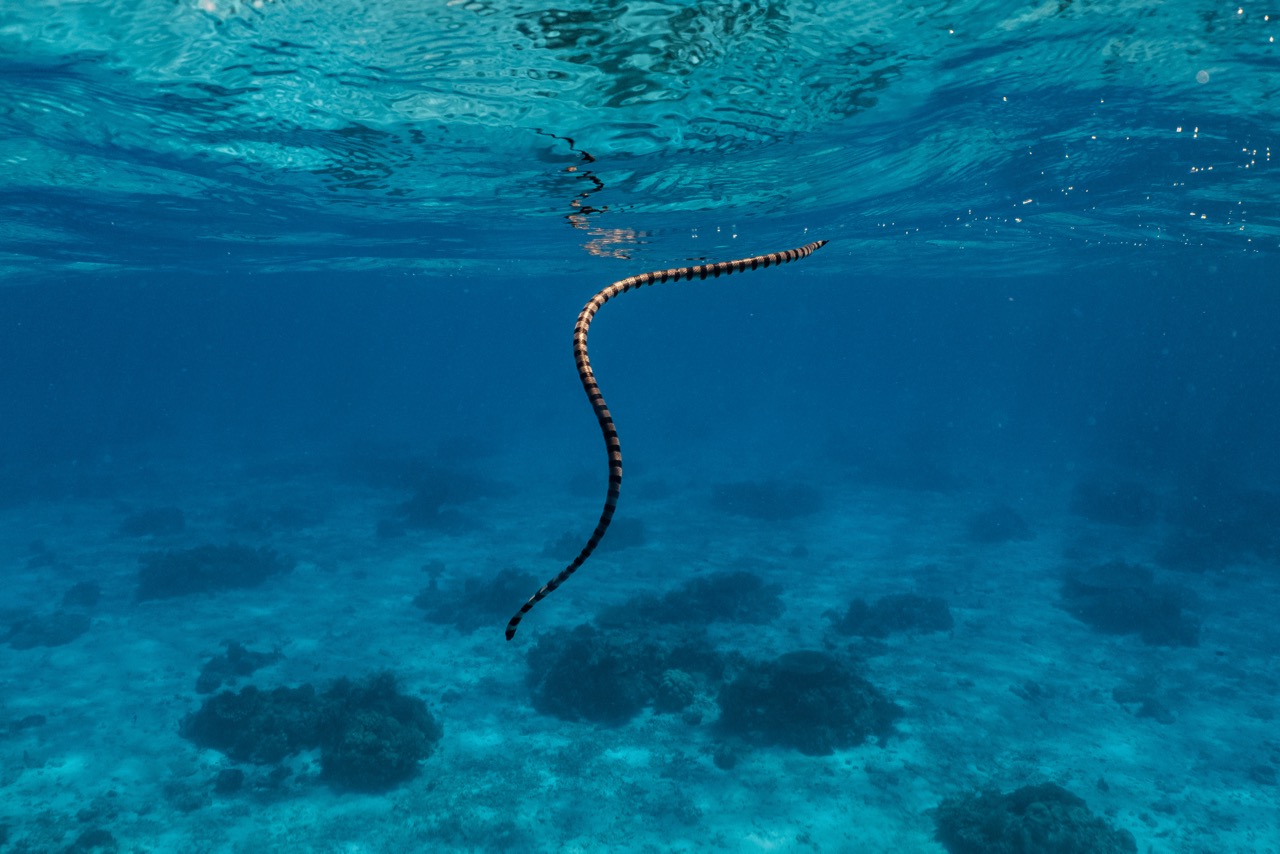Hey there, welcome to Facts Vibes! Today, we’re diving into the fascinating world of sea snakes. From their unique adaptations to their importance in marine ecosystems, sea snakes are truly incredible creatures. Let’s explore 10 captivating facts that will leave you amazed by these ocean-dwelling serpents.
Discovering the Fascinating World of Sea Snakes: 10 Intriguing Facts to Know
Discovering the Fascinating World of Sea Snakes: 10 Intriguing Facts to Know
Sea snakes are a unique and mysterious species that inhabit the world’s oceans. Here are 10 fascinating facts to deepen your understanding of these remarkable creatures.
1. Adapted for Life in the Ocean: Sea snakes have evolved to thrive in marine environments, with flattened tails for swimming and valves in their nostrils that close when they dive.
2. Venomous Predators: They are highly venomous, with some species possessing venom more potent than land snakes. Their venom is primarily used for hunting prey, which includes fish and eels.
3. Breath-holding Abilities: Sea snakes are capable of holding their breath for an impressive amount of time, enabling them to dive deep in search of food or shelter.
4. Global Distribution: These creatures can be found in warm oceanic waters around the world, particularly in the Indian and Pacific Oceans.
5. Unique Reproductive Behavior: Unlike most snakes, sea snakes give birth to live young instead of laying eggs. This adaption is thought to provide better protection for offspring in the open ocean.
6. Exceptional Camouflage: Their skin patterns and colors allow them to blend seamlessly with their surroundings, making them efficient hunters and helping them evade predators.
7. Environmental Indicators: Sea snakes are sensitive to changes in their habitats, making them valuable indicators of the health of ocean ecosystems.
8. Conservation Concerns: Despite their critical role in marine ecosystems, sea snakes face threats from habitat destruction, pollution, and accidental bycatch in fishing gear.
9. Feared and Misunderstood: Due to their venomous nature, sea snakes are often misunderstood and feared, leading to negative attitudes that impact their conservation.
10. Research Opportunities: Scientists continue to study sea snakes to unravel their mysteries, with potential applications in medicine and marine conservation.
Sea snakes are truly remarkable creatures, and delving into the depths of their world reveals a multitude of captivating insights about these enigmatic marine reptiles.
Most popular facts
Sea snakes are highly venomous and possess some of the most potent venom among all snakes.
Sea snakes are highly venomous and possess some of the most potent venom among all snakes.
They are exclusively marine reptiles and are found in the warm coastal waters of the Indian and Pacific Oceans.
They are exclusively marine reptiles and are found in the warm coastal waters of the Indian and Pacific Oceans.
Sea snakes have adapted to a fully aquatic lifestyle and can remain submerged for long periods of time.
Sea snakes have adapted to a fully aquatic lifestyle and can remain submerged for long periods of time.
These reptiles have paddle-shaped tails that aid in swimming and are often mistaken for eels.
These reptiles with paddle-shaped tails that aid in swimming and are often mistaken for eels are called sea snakes.
Sea snakes have specialized glands that allow them to excrete excess salt, enabling them to live in saltwater environments.
Sea snakes have specialized glands that allow them to excrete excess salt, enabling them to live in saltwater environments.
Some species of sea snakes can give birth to live young, while others lay eggs on land.
Sea snakes exhibit diverse reproductive strategies, with some species giving birth to live young and others laying eggs on land.
They are carnivorous and feed primarily on fish and eels, using their venom to immobilize prey.
They are carnivorous and feed primarily on fish and eels, using their venom to immobilize prey.
Though they are venomous, sea snakes are generally not aggressive towards humans unless provoked.
Sea snakes are generally not aggressive towards humans unless provoked.
Their scales are often smooth and shiny, providing hydrodynamic advantages for swimming.
The scales of aquatic animals are often smooth and shiny, providing hydrodynamic advantages for swimming.
Sea snakes have a flattened body shape, which allows them to move through water with minimal resistance.
Sea snakes have a flattened body shape, which allows them to move through water with minimal resistance.
Certain species of sea snakes have the ability to expand their jaws for swallowing large prey.
Sea snakes have the ability to expand their jaws for swallowing large prey.
The lungs of sea snakes have adapted to extract oxygen from water to supplement breathing air at the surface.
Sea snakes have adapted lungs to extract oxygen from water to supplement breathing air at the surface.
Sea snake venom contains neurotoxins that affect the nervous system and can be lethal to humans if not treated promptly.
Sea snake venom contains neurotoxins that affect the nervous system and can be lethal to humans if not treated promptly.
Longevity varies among sea snake species, with some living up to 20 years in the wild.
Sea snake species have varying longevity, with some living up to 20 years in the wild.
Conservation efforts are vital for protecting sea snakes due to threats such as habitat destruction and accidental capture in fishing gear.
Conservation efforts are vital for protecting sea snakes due to threats such as habitat destruction and accidental capture in fishing gear.
In conclusion, sea snakes are fascinating creatures with unique adaptations and behaviors that make them essential to the marine ecosystem. Understanding these 10 facts about sea snakes helps to appreciate their importance and underscores the need for conservation efforts to ensure their continued existence. These elusive serpents serve as a reminder of the wonders and complexities of the ocean world, fostering a deeper understanding of the delicate balance that sustains marine life.
